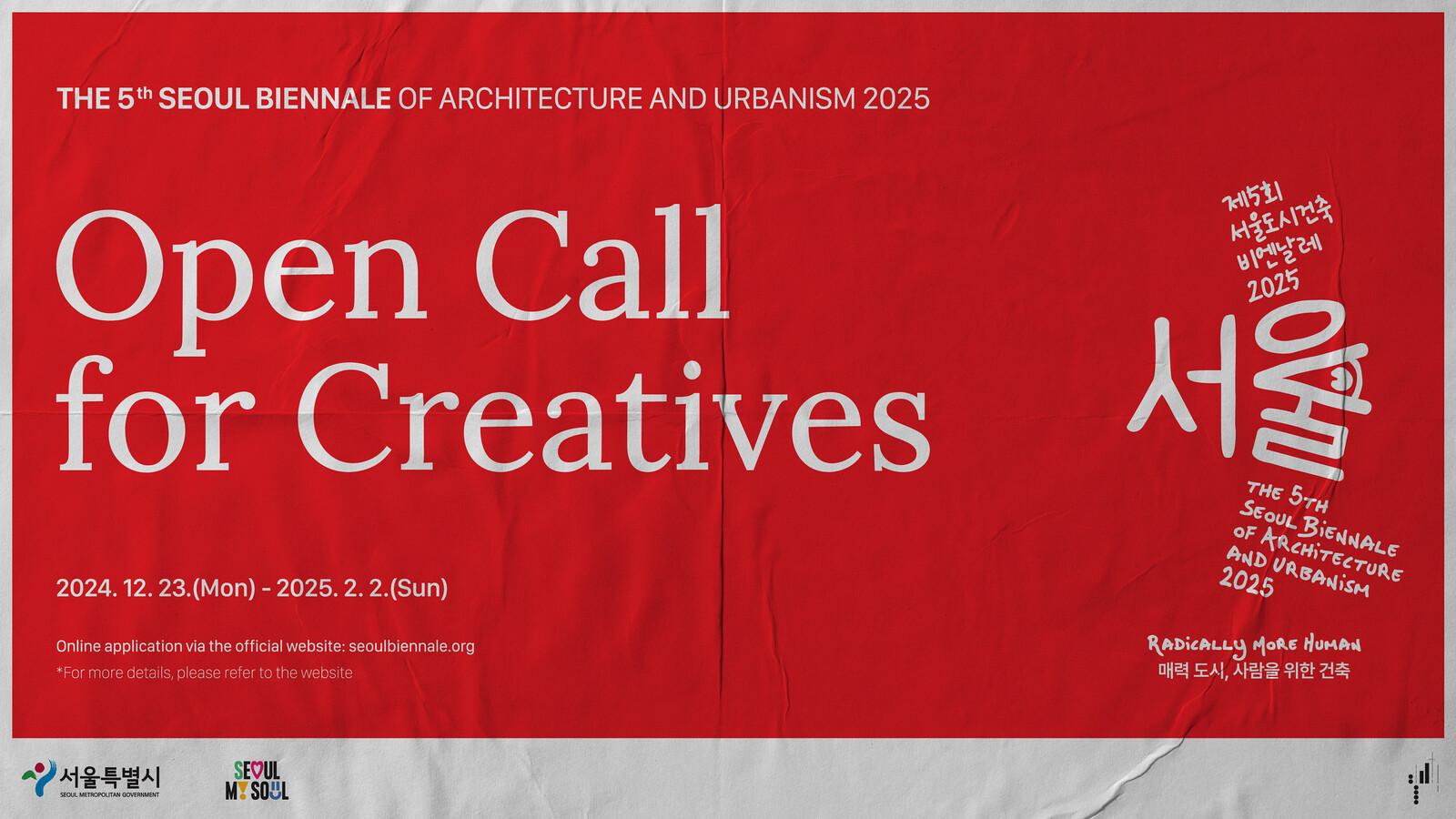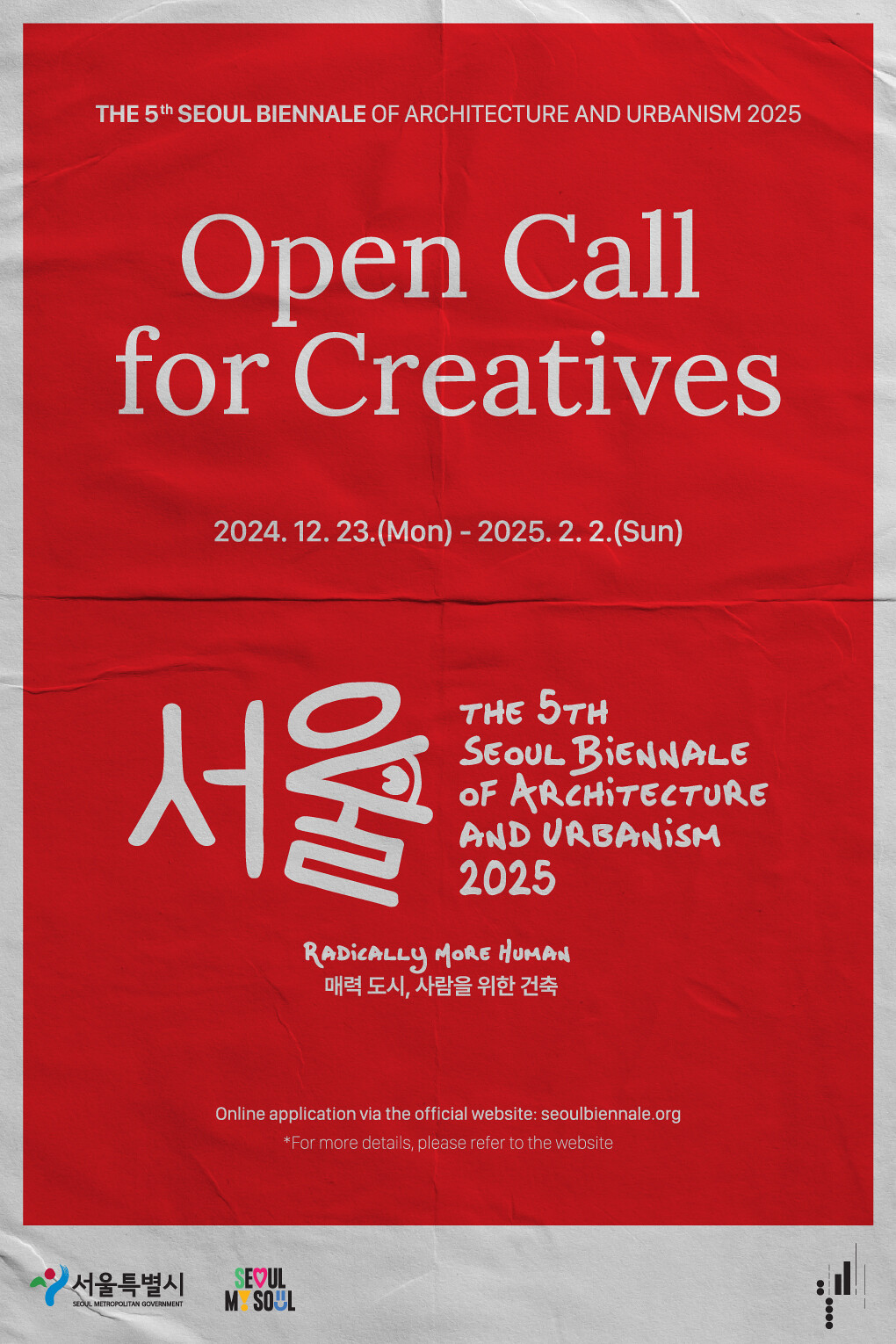For some time, I have been interested in developing an anthropology of the otherwise. This anthropology locates itself within forms of life that are at odds with dominant, and dominating, modes of being. One can often tell when or where one of these forms of life has emerged, because it typically produces an immunological response in the host mode of being. In other words, when a form of life emerges contrary to dominant modes of social being, the dominant mode experiences this form as inside and yet foreign to its body. For some, the dominant image of this mode of interior exteriority is the Mobius strip, for others the rhizome, and still others the parasite.1 But what if the dominant visual metaphor of the anthropology of the otherwise were a woven bag?
How might one consider the anthropology of the otherwise through gift economies and alternative currencies and communities, and in turn consider emergent forms of social being in relation to what I am calling the embagination of space by the circulation of things? As I hope will become clear, conceptualizing social space as a kind of embagination foregrounds the fact that gift economies can close a world but never seal it. Every gift economy creates simultaneous surplus, excess, deficits, and abscesses in material and memory, and thus the most profound gift is given at the limit of community. Thus, in exchange for the invitation to participate in the publication you have before you, I offer a series of thoughts on how spheres of life emerge and collapse, and expand and deflate, as things move and are moved across space and time. I will begin with a discussion of the anthropology of the gift, turn to contemporary debates between Bruno Latour and Peter Sloterdijk about the relative values of network and sphere theory, and end with reflections on two recent projects—a graphic memoir and augmented reality venture—that elaborate what I mean by embagination.
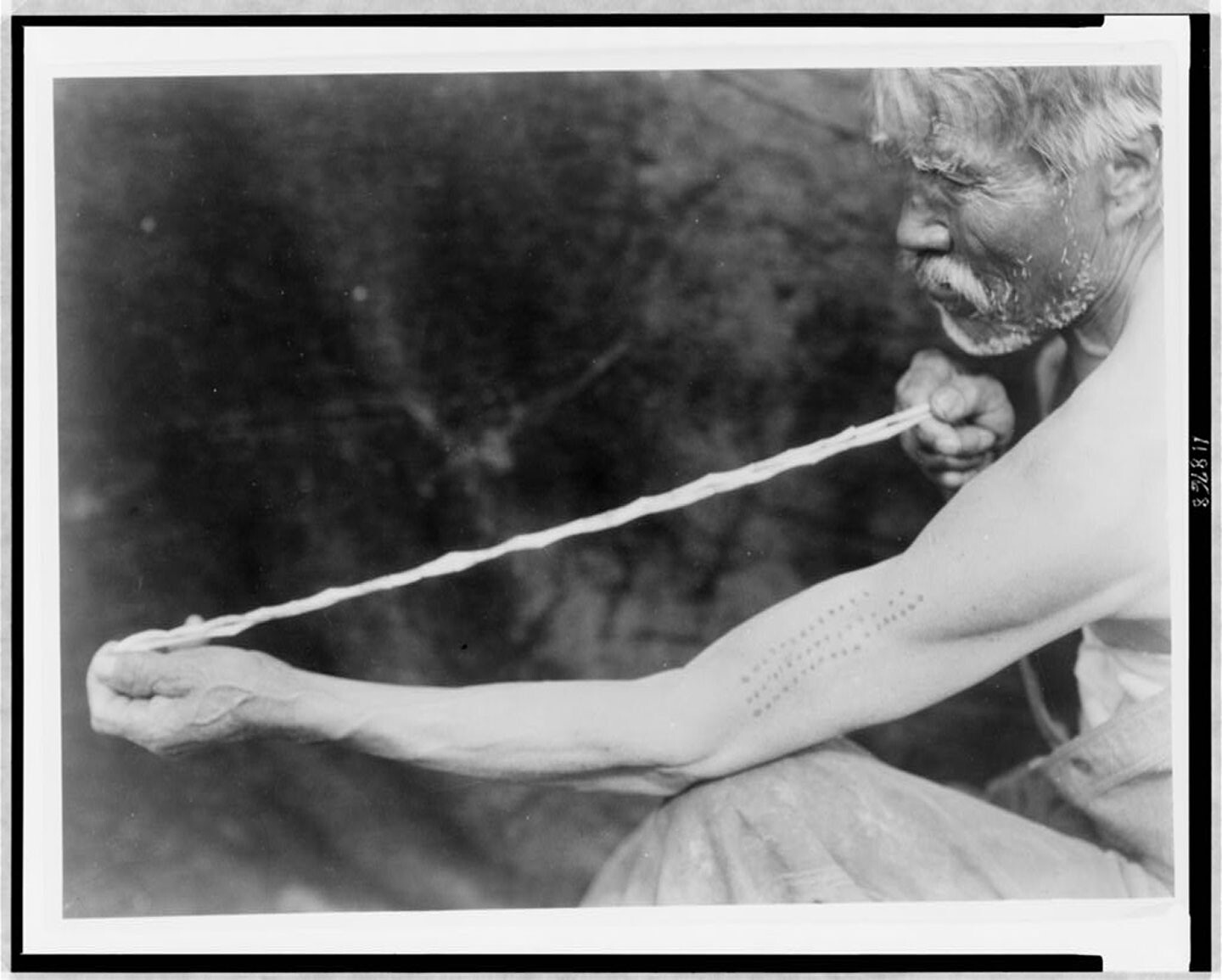

Edward S. Curtis, Tolowa Indian Measuring shell money, 1923. Photo: Edward S. Curtis Collection (Library of Congress)/Public Domain.
1. The Gift
At the center of modern anthropological lore is a person who created a discipline by describing a practice wherein to give away was to receive more in return. The person was the Polish scholar Bronisław Malinowski, who chose to remain on the Trobriand Islands rather than spend the First World War in an Australian internment camp.2 The practice was Kula. Malinowski claimed that, at its simplest, Kula was an inter-tribal exchange of ceremonial objects (red shell necklaces and white shell bracelets) that traveled in opposite directions in a closed circuit along established routes. No man—and for Malinowski it was always men, if not all men—knew where Kula objects traveled outside his local purview. And no man could keep the object he received nor, once in, could he opt out of this ritualized exchange.3 “A partnership between two men is a permanent and lifelong affair.”4 The things that moved between them could also never stop moving. Once within the circle of Kula exchange, ritual objects only left when they physically perished.5 But if the ceremonial exchange of necklaces and bracelets publicly defined Kula, “a greater number of secondary activities and features” took place “under its cover,” including the ordinary trade and barter of various goods and utilities that, although indispensible for everyday life, were often locally unavailable.6 As a result, Kula embraced an inter-connected complex of activities, created an organic social whole out of disparate social parts, and established a hierarchy of prestige that defined this social world in part and in whole.7 Ceremonial necklaces and bracelets were given, accepted, and reciprocated, but what returned was not mere jewelry, but a world. This world was fabricated by the hierarchies of power and prestige Kula established, represented, and conserved; and by the ordinary activities that went on under its cover, embedding these hierarchies of prestige ever deeper into the fabric of everyday life.
If we are interested in how Kula provides a genealogical backdrop to network and sphere theory, let alone to new forms of exchange communities, then three observations about Malinowski’s methodological and conceptual claims are pertinent. First, Malinowski sought to found the discipline of anthropology on the premise that the anthropologist had a different analytical perspective on the social world than “the native,” namely, that the anthropologist could see the total social system of exchange whereas “the native” could only see his local part. Second, in order to produce this anthropological point of view, the anthropologist had to abstract the Trobrianders from the diachronic nature of Kula (that Kula lines were always being made and remade) and himself from the history that connected him to his subjects. And third, anthropologists had to reconceptualize acts of reciprocity as the condition rather than the end to sociality—reciprocity does not end social relations, but knits them.
The understanding of “gift economies” as a vital part of the machinery of social power was essential to Marcel Mauss’s reinterpretation of Malinowski’s account of Kula and other ethnographies of the Pacific in The Gift. For Mauss, the gift had a straightforward tripartite structure—the obligation to give, to receive, and to reciprocate. It also had a dominant spirit. Gift giving was not an exercise in treaty making. It was an exercise of aggression wrapped in dazzling ribbons and elaborate language. Although new networks are formed through seduction and wooing, the spirit of the gift was more akin to the gods of war than the gods of peace.8 To offer a gift was to assert power (mana, hau) over another, a power that remained until the recipient could reverse the dynamic. In other words, if the offer of a gift was an invitation to sociality, it was also an announcement of the onset of a perpetual war of debt in which the books could never be settled. If the recipient of a gift was unable to reciprocate, then any mana he had accumulated in previous exchanges was nullified. Thus anyone who enters the Kula wages that he will acquire more prestige in due time; but he also risks losing all the prestige he has previously acquired—and more, since he might lose not only what he has gained but also, in coming to know what he might have had, might lose his innocence as well. In short, Malinowski and Mauss read Kula as a kind of bank, and banking as a kind of warfare. Before banks, before currency, valuable things were placed in circulation as lines of credit whose ultimate end was to return to the sender having accumulated surplus value. Participants gave in order to increase their holdings, but this interested act created something more than the interested rational subject—it created moral obligations and social worlds.9
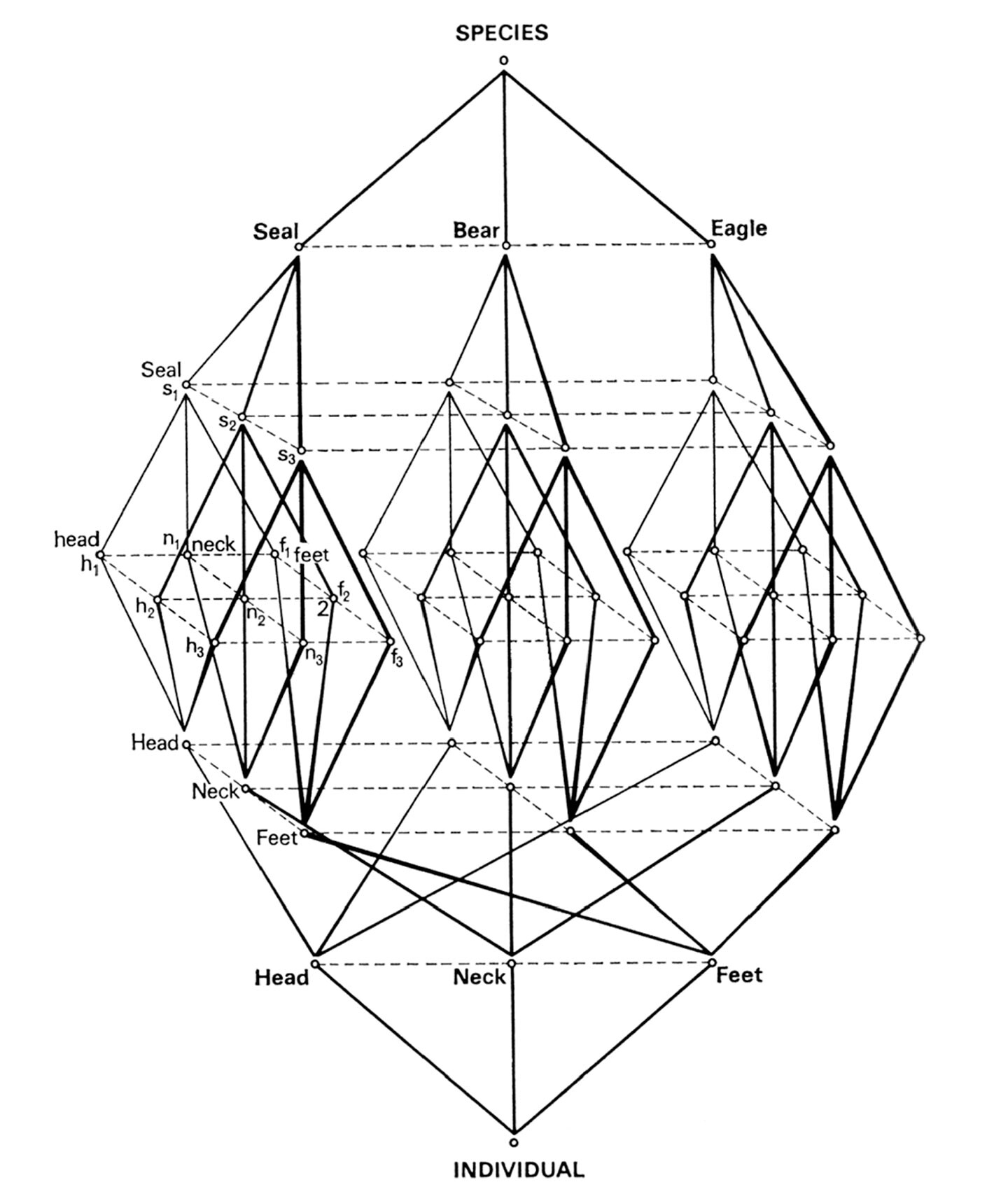

The great French anthropologist, Claude Levi-Strauss, would take this insight and make it the foundation of the incest taboo and subsequently his structural anthropology. The incest taboo was not a prohibition against sex so much as a prohibition against hoarding. Men—and for Levi-Strauss, like Mauss, this was a man’s world—had an obligation to indebt others by giving them valuables—the most valuable of all values being a woman. To indebt a person was not an antisocial act but the very conditions of sociality. Here Levi-Strauss followed Marx, who also saw hoarding as an antisocial practice. For Marx, as for Levi-Strauss, human sociality depended on a kind of reflexive fold that appears when one sends out a value in order for it to return having gained a surplus.10 These reflexively structured routes make the worlds within which people dwell.
While Levi-Strauss’s views about men’s manipulation of women, words, and goods have been subjected to a thorough critique, his representation of the world of human exchange offered us a new visual metaphor—a sealed bag.11 Several qualities of this sealed bag bare noting. First, whereas Levi-Strauss saw the social worlds that emerged in the circuit of credit and debt as a structurally closed totality, from a diachronic perspective, new social networks were always being added or removed such that the symmetrical form of the matrix was always being distorted. In other words, a bag might appear sealed off from other surrounding bags from a synchronic point of view, but if we take into account Mauss’s argument that new lines of gift-exchange are always being created through seduction, then, from a diachronic point of view, the strings that open and shut it reappear. Second, Levi-Strauss gave volume to gift exchange. The famous signifying chain was revealed not to be a chain so much as a set of interlinked fences that enclose a world giving it semantic volume and weight, as well as pragmatic space and time. It would seem, then, that Levi-Strauss overcame a certain problem Sloterdijk would later diagnose as endemic to network theory (and here we could add to Malinowski’s schematic representation of the gift). The problem with network theory, Sloterdijk claims, is that it overstates the linear connections of points within a planar surface to the detriment of the intrinsic volume of all social space—network theory replicates rather than analyses the Euclid hierarchy in which a point is that which has no part, lines are made out of these empty points, planes from lines, and spheres from planes. For Sloterdijk—and it would seem for Levi-Strauss as well—because humans cannot reside in a point, in the beginning there was the bubble.12 Third, for Levi-Strauss, because every cultural world feels like a closed space to those within it, each cultural world is structured immunologically in the sense that each world interprets every difference within it as a possible foreign invasion and uses mechanisms to neutralize, expel, or extinguish this “invasion.”
But whether they foreground a symmetrical (synchronic) or asymmetrical (diachronic) matrix, anthropologists of the gift saw the prohibition against hoarding valuables and the obligation to enter into debt/credit relations as vital to the creation of self-reflexive folds that make social and cultural worlds possible. If people were allowed to hoard their valuables, no social matrix could be fabricated out of the reflexive networks of giving and receiving. Social space would not bend back on itself and form pockets of communication and inhabitation. Instead, space would remain empty, negating any place for humans to dwell. We can think of these reflexive movements as a kind of embagination of space—the creation of a flexible receptacle closed in all places except where it can be tied and untied. But, again, this fold, or embagination, fabricates a world in which individuals, and competing worlds, attempt to dwell—to their advantage or disadvantage.
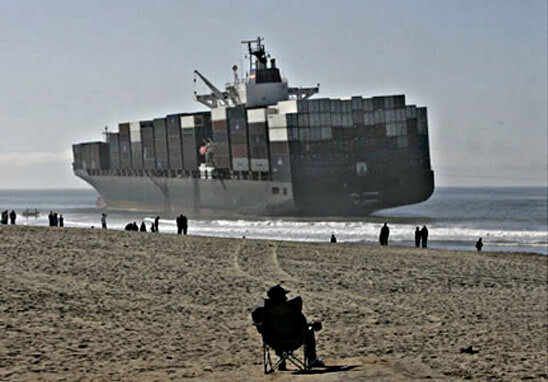

2. Routes and Worlds
It is in this light that the anthropology of the gift provides a genealogical backdrop to Latour’s network theory and Sloterdjik’s theory of spheres. To borrow from Latour, gift-exchange can be seen as one kind of network: they create nodes and linkages as things (whether men, women, boys, ritual bracelets, pigs, or words) circulate and are localized. And, insofar as gifts return, they create a specific kind of envelope—a self-reflexive sphere—in which a life-world might emerge. But this life-world relies not on points that have no part but on thick networks of differentiation where actual and potential meaningful inhabitation takes place.13 Thus, for Malinowski, Kula stitched space together reflexively, creating enclosures that the Trobrianders experienced as their world. And Levi-Strauss believed that the universal circulation of women in particular ways, and the indebtedness and risk this circulation created, stitched together particular cultural spaces. For Levi-Strauss, women were the needles that men used to fabricate cultural spaces out of universal space, human enclosures out of abstract opens, each according to their particular pattern. But as feminist and queer scholars demonstrated the gendered nature of anthropological accounts of the gift, other needles came to emerge.14
Anthropology, even before the rise of structural anthropology, initially treated these human enclosures as if they had no drawstrings, ignoring the networks that allowed them to enter these embagged worlds in the first place (so Malinowski did not discuss the forms of circulation and governance that allowed him to chose between the Trobiand Islands and an Australian internment camp). But, following colonial, feminist, and anti-colonial critiques, anthropologists became interested in the networks that ran between and into clusters of embagged worlds, and how these networks pulsed with various forms of debt, risk, and power, with various hierarchies of being and existence.15 When the strings forming and connecting embagged space began dominating disciplinary interest, the anthropology of globalization and transnationalism emerged.And this is one of the great lessons that the anthropology of the gift—and later the anthropology of circulation—bestowed on us: that things do not simply move. Routes figure space—they create worlds—and are figured by figurated space, by the worlds through which they move.16 They are the condition of previous circulatory matrixes and become part of the matrix that decides which other kinds of things can pass through and be made sense of within this figured space. And routes configure things—they shape them into 3D manifestations. What “things” are—what counts as an entity—should be understood broadly. Whether container ships, kin or stranger socialities, psychic expectations, affective intensities, linguistic forms: all form, conform, and deform existing cultures of circulation. Social institutions, or “demanding environments,” emerge around these material and affective curvatures, effectively controlling the further fabrication of things and their movements.17
As an example of the dynamic between the figurating function of routes, we need look no further than the Panama Canal. Ashley Carse has examined how it was not only the landscapes around the Panama Canal that were reorganized by its creation and management, but the shipping that passed through it. To see what is at stake here we must first take seriously the materiality of the earth, and assume that moving goods across continents through waterways is not an abstract idea, but a history of material fabrication. Various routes exist or have been built to allow ships to minimize transport costs and maximize profit. The Panama Canal became one of the key transit points for shipping when it was completed in 1914. Originally, all sizes and shapes of ships passed through it, with the only constraint being that the ship should not exceed the width, depth, and buoyancy conditions of the canal. But, over time, in an effort to maximize profit, companies designed what came to be called a Panamax ship: transport vessels that occupied every meter of the canal’s lock system and container boxes that could be stacked tightly side-by-side.
Another great lesson bestowed on us by the anthropology of the gift was the insight that these figurated spaces were subtended and distended by time. Social theorists originally focused on the interval of time between the act of giving (credit) and the act of reciprocating (debt payment). Levi-Strauss, for instance, argued that as men sought to expand their network advantageously, they developed increasingly complex temporal intervals between marriage givers and marriage takers.18 Earlier, Marx attempted to understand the function of the interval between commodity production and money form, and exchange and use value. In his two-volume The Civilizing Process, the sociologist Norbert Elias argued that modern forms such as self-restraint, stranger sociality, and trust emerged out of increasingly complex networks of social connection across ever-vaster expanses or geographical social spaces.19 As these increasingly complex exchanges unfolded across time and space, new social institutions (such as capital) came into being alongside their specific technologies (such as insurance).20
Bracketing debates in Marxism and anthropology over the differences and convergences between gift and commodity societies—such as the seeming differences of alienation, domination, and control (alienable versus inalienable objects, undisguised versus disguised domination, utilitarian versus moral controls, the reification of objects versus the personification of subjects)—one can understand the temptation to understand financial capital as a form of Kula exchange. Participants in the market seem to believe in the independent power of the market, similar to how participants in Kula believed in the power of Kula. And they believe in and trust the market even though—no more than Kula participants—beyond their local currents and eddies, market participants can have a striking understanding of complex networks and spheres that they create and participate in. Moreover, there seems to be a necessary relationship between the ignorance of trust and the cunning of information for the system to work. This is nowhere more profoundly demonstrated than in the recent financial crisis involving Commercial Mortgage Backed Securities (CMBS). Even the critical understanding of the system as such doesn’t guarantee a specific social outcome. If Marx sought to articulate a disenchantment with the black box of capital accumulation, countless speculators seek to beat the margin through a similar analytic acumen by creatiing new forms and networks, further complicating the circuit of capital and the spheres of its inhabitation.
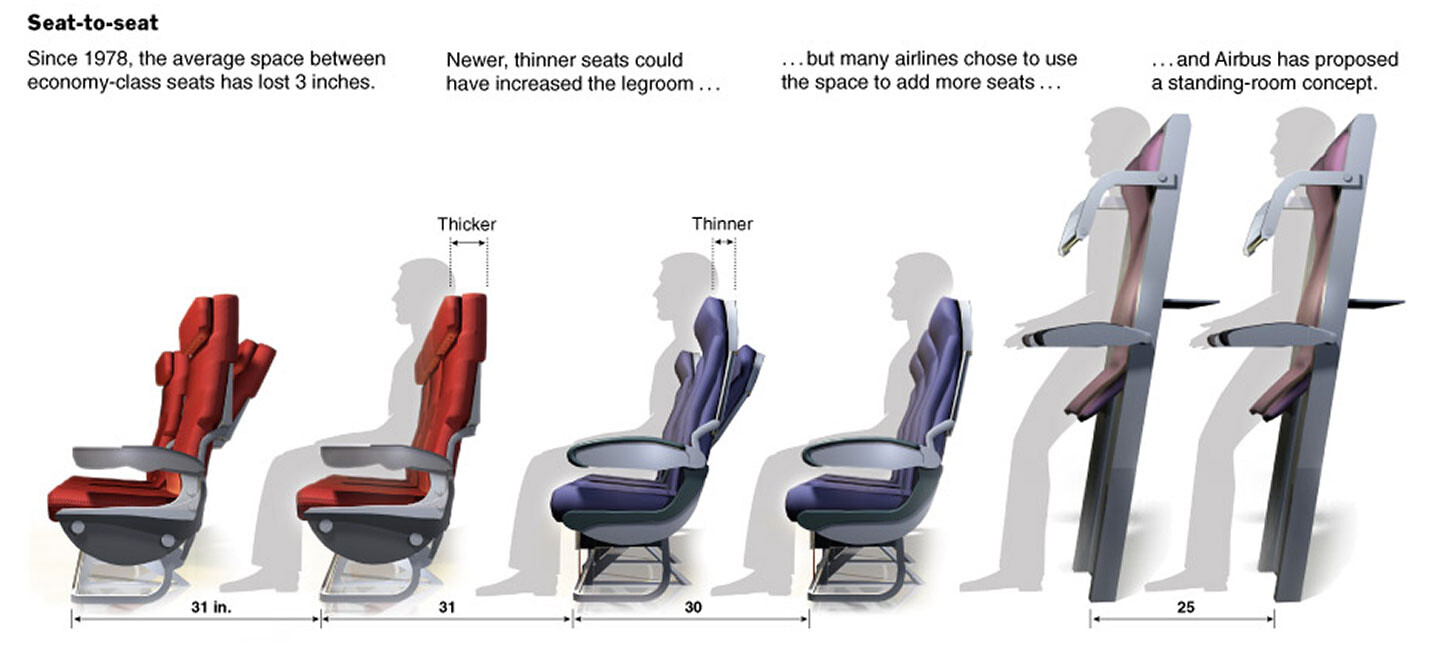

Different airline seating designs from 1978 to the recent standing-room concep by Airbus.
At this point we must return to the real fundamental insight of the anthropology of the gift. While dramatic displays of wealth, such as Kula rituals and CMBS structures, might focus the social eye, “a greater number of secondary activities and features” are done “under its cover.” These other unperceived activities carried out in plain sight carry out the routine of creating the subjects who then take these routes and worlds as the best and most natural condition of the world. But no world is actual one world. The feeling that one lives in the best condition of the world unveils the intuition that there is always more than one world in the world at any one time. The very fact of Malinowski’s presence, and his own argument that for the Trobrianders there were worlds within worlds, testifies to this claim. The material heterogeneity within any one sphere, and passing between any two spheres, allows new worlds to emerge and new networks to be added. This heterogeneity emerges in part because of the excesses and deficits arising from incommensurate and often competing interests within any given social space. These interests press materiality toward different futures even when operating within the same general social logic. Take, for instance, the different futures pressing into the materiality of contemporary air transportation. The pressure of human transport capital is to cram an ever-increasing number of people into limited space, while the pressure of agricapital is to increase the consumption habit of human beings, creating ever-larger human bodies. And both of these are subject to the speculative trade in oil and commodity futures driven as much by the gamble of bubbles as the logic of corporate functionality. But these futures are driven as much by the communicative networks that allow vast and high speed trading as the slow production and life of the transportation industry. And here we return again to an insight gleaned from the gift: the potential futures internal to every actual world do not emerge willy-nilly. Debt/credit relationships tie up and encumber the future with present obligations, and these obligations are literally carved into landscapes and subjects.
And it is here, in the excessive heterogeneity of social life, that the anthropology of the otherwise meets contemporary theories of routes and worlds, networks and spheres. Bataille is the name we usually associate with the critique of the economy of the gift as oriented to a balancing of accounts rather than radical expenditure, pure waste, or senseless excess. But the anthropology of the gift was also always an anthropology of an otherwise, and of radical deracination—of a part that has no part as of yet. Alongside their interests in gift economies, these anthropologists were also interested in the formless, in radical expenditure/deficit, and in the abject that exposed, escaped, or was produced by these systematizations of circulation and exchange. These excesses, deficiencies, and abscesses in the complex relationship between networks and spheres, routes and worlds, and the potential new worlds that emerge out of them has been the focus of two ongoing projects of mine.
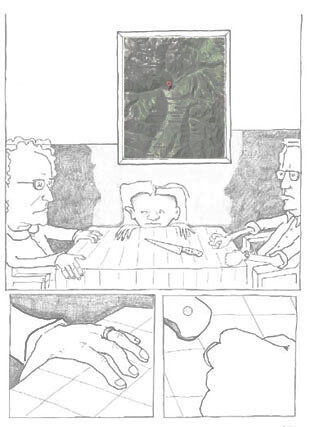

3. Excesses and Deficits
For the last year, I have been working on a graphic memoir about the incommensurate social imaginaries that defined the relationship between my grandparents and me. Like many graphic memoirs, this one attempts to poetically condense a series of visual and written texts. It uses standard representational logics to probe a set of questions about how life worlds ravel and unravel in the historical unfolding of empire, nation-state, and global capital, and how these ravelings and unravelings create new social imaginaries that may or may not develop the institutional supports to inflate and sustain themselves. Like other things, these gifts of memory move along specific routes, raveling and unraveling worlds in the process. Memory does or doesn’t transfer across space (as organized kinds of places) and time (in the sense of generational logics), and it is here that we can see, perhaps most clearly, that gifts can be given long after the spherical world in which they make sense has collapsed. And gifts can return from a world not yet fully made to a world long since passed away. If these are the gifts of death, then gifts of death are indeed the condition for true beginnings.
The book is broken into three sections, “Topologies,” “Mythologies,” and “Analogies,” and is written from the perspective of a six- to eight-year-old girl. The first section, Topologies, centers on an image in a frame that hung in my paternal grandparents’ dining room. This image riveted my paternal relatives, causing fights, evoking tears, and staging long silences. The image itself was incomprehensible to me at the time. I would retrospectively learn that it was a topological rendering of the mountains of the Trentino-Alto Adige region. My paternal grandparents were born in a small village called Carisole, just north-west of Trento in Italy, where their families had lived for countless generations. The Trentino-Alto Adige region was divided between the Austro-Hungarian Empire and the Italian state prior to World War I, incorporated into Italy only after the War. During the war, the region saw vicious trench warfare and mass slaughter, and my grandparents left soon after World War I, taking with them a life-world that I could not see. For this reason, the image within the picture frame carried significant symbolic weight for them. Family fights would erupt when anyone would tack down the referent of this sign. When I would ask my father what the picture meant (What’s that? “That’s where our village Carisole is.” Where’s Carisole? “It’s in Italy.”), my grandfather would fly into a fury that rippled across older relatives. But when my grandfather described what the picture portrayed (“That’s our village Carisole.” Where’s Carisole? “It’s in the Empire.”), it failed to align with any of my known social cartographies.
The second section, Mythologies, in turn presents the core myth of each of my grandparents. For instance, the condensed story of my maternal grandfather was that of his parents’ attempt to survive in Alsace Lorraine as hyperinflation was burning through the German Empire, which put him on a boat to the US with five dollars in his pocket. He was a gambler and womanizer as a young man, knocking up my mother’s mother, marrying her, and then descending into extreme poverty. One day he won big at the horse races, bought a butcher’s shop, got lung cancer, lived long enough to see my mother marry, and then died. The final section, Analogies, shows how the small child attempts to make sense of this history in the 1960s in the racialized and racist American South.
Behind the drawings is a mediation on how forms and practices of sense become impractical as one sphere of life collapses into another—how a spherical world can continue to send out gifts of memory long after it has collapsed. The deformations and reformations of memory I try to capture here are possible because of the excesses and deficits that emerge as routes force open worlds and migrate objects (here subjects, my grandparents) into the midst of other worlds, creating embagged forms of life. In standard condensed graphic form, I can conjure the actual routes and localizations, the embagination of world, the tensions internal to these new worlds because of networks already running through them, and the potential networks and worlds that emerge out of the unwindings and rewindings of memories in motion.
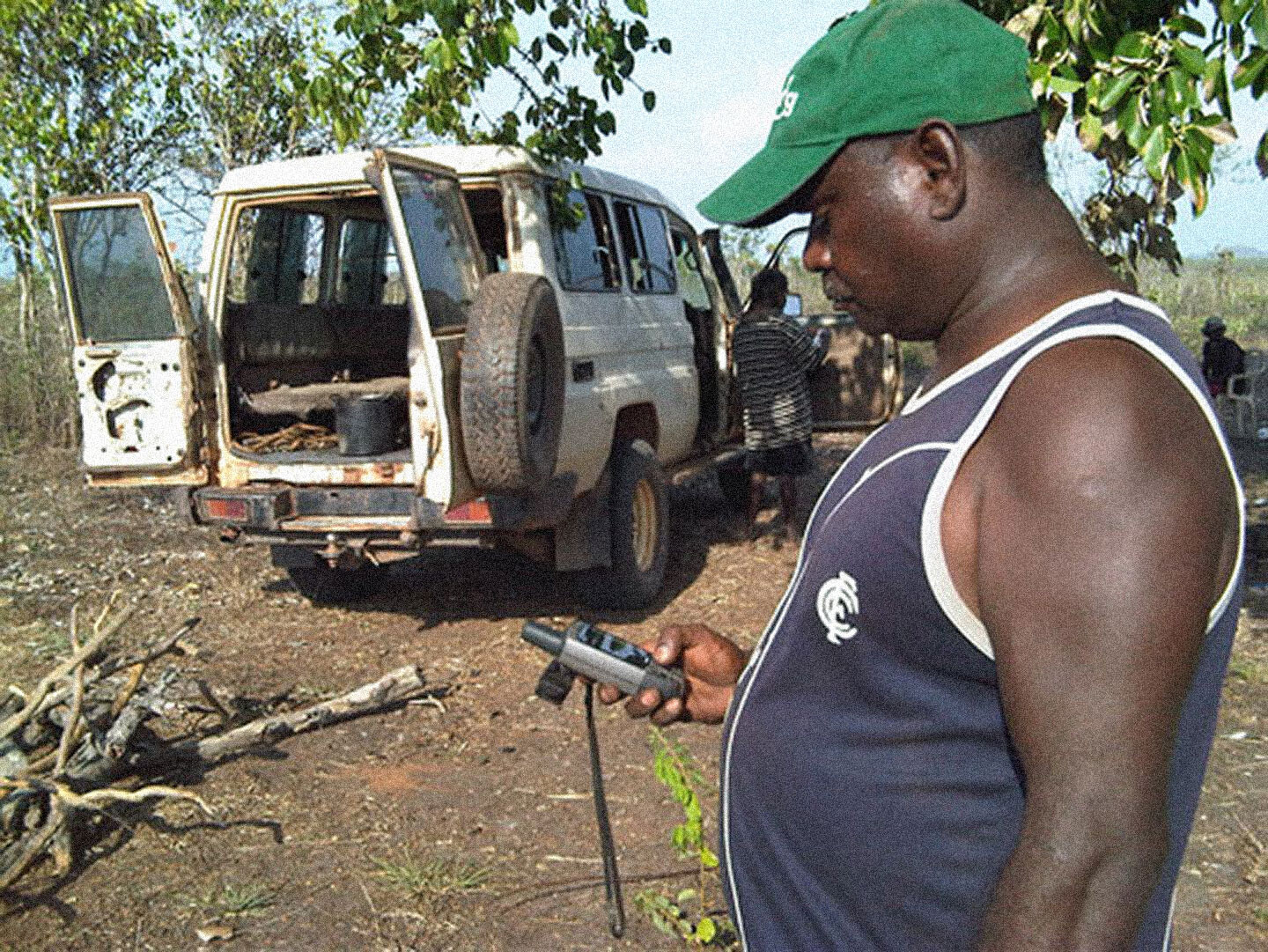

4. Augmented Reality
A second project on which I have been working focuses on the media and mediation of memory as memory travels across time and space, and the effect of this mediation on the worlds in which people dwell. In this case, very old Indigenous friends and colleagues and I are trying to build an augmented reality project that would allow access to stories about place, in places. The project started about five years ago, when new smartphone software such as 2D barcode-readers and GPS were just emerging to allow for augmented reality.
We were calling what we tried to envision “the mobile phone project,” a digital project seeking to use mixed-reality technology to embed traditional, historical, and contemporary knowledge back into the landscape. More specifically, it would create a land-based “living library” by geotagging media files in such a way that they would be playable only within a certain proximity of a physical site. The idea was to develop software that creates three unique interfaces—for tourists, land management, and Indigenous families, the latter having management authority over the entire project and content—and provide a dynamic feedback loop for the input of new information and media. Imagine a tourist, or one of our great-great-grandchildren in the same area. They open our website, which shows where a GPS-activated mixed-reality story is located. They download this information into their smartphone. Now imagine this same person floating off the shore of a pristine beach in Anson Bay. She activates her GPS and video camera and holds up her smartphone. As she moves the phone around she sees various hypertexts and video options available to her. Suddenly the land is speaking its history and culture without any long-term material impact on the landscape. And the person can only hear this story in the place from which it came.
I understand media as a demanding environment striated by other demanding environments (or, a complexly networked sphere). In other words, media, like the gift, is not an empty space, but aggressive spacing within already existing routes and worlds. Media does not open itself up to make room for a new object so much as it makes a demand on how the object gives itself over to the spacing. More so perhaps than the graphic memoir project, this augmented reality project suggests how an anthropology of the otherwise encounters the excessive heterogeneity of contemporary routes and worlds, networks and spheres.
The project itself emerged out of noncorrespondence within settler colonial logics of domination. My Indigenous colleagues had spent their lives, as had their parents and grandparents, in a small rural Indigenous community across the Darwin harbor in Australia. They had grown up in the shadow of the land rights movement and the celebration of Indigenous cultural difference. Land rights and cultural recognition in Australia was exemplary of the logic of care in late liberalism—by making a space for traditional Indigenous culture, the state argued it was making a space for this traditional culture to care for Indigenous people.
However imperfect, this way of life started to unravel in 2007. As reported in the local Darwin newspaper, on March 15, 2007, members of this project were threatened with chainsaws and pipes, watched as their cars and houses were torched, and their dogs beaten to death. Four families lost rare, well-paying jobs in education, housing, and water works. Public meetings were held, and were attended by the leaders of Department of Family, Housing, Community Services, and Indigenous Affairs in the Northern Territory Labor government. In these meetings, the displaced people were held up as examples of the failures of land rights policies to protect Indigenous people living in communities outside their traditional country. The families driven out were promised new housing, schooling, and jobs at Bulgul, a site closer to their traditional countries. Fifty people promptly moved to Bulgul and set up a tent settlement.
But on June 21, 2007, John Howard, then prime minister of Australia, declared a “national emergency in relation to the abuse of children in Indigenous communities in the Northern Territory.” Indigenous people living in remote communities, or those like my friends who were promised housing in or nearer to their traditional country, were told to move closer to the cities where infrastructural and service delivery costs were lower, even if doing so would endanger their lives. The people who made the promises to the displaced persons confronted the budgetary consequences of these promises and suddenly became difficult to reach. In the year that followed, the income of two of the six families driven off went from roughly $AUD28,000 to $AUD12,000 per year after they lost their permanent jobs and were moved onto the Community Development Employment Program (CDEP, a work and training program within a social welfare framework, loosely called “work for the dole”).
If this project emerged out of the material and discursive networks that moved my colleagues across social landscapes, then the communicative sphere into which they sought to insert their modes of memory and memorialization retain their own forms of reflexive movement and figurating force. I will mention only three. First, all objects that are placed into our augmented reality project are treated according to specific software routes that create semantic worldings. No matter which semantic ideology underpins this routing—such as the new Ontological Web Language (OWL)—it nevertheless demands that the entextualized memory and knowledge conform to it. Second, although many postcolonial archives and digital projects seek to develop software that would encode local protocols of information circulation and retrieval—such as restrictions based on kinship, gender, or ritual status—it remains that, in order to be part of the global condition of the contemporary internet, such information must be universally available before it can be sorted based on user particularities. In other words, user protocols—the software that takes into account local social principles of circulation and retrieval—are always secondary and subordinate to the infrastructure of the Web itself. Finally, the ability to hinge information to place is mediated by a specific set of demanding environments and the institutions that support them.
But remember: all embagged spaces are the result of not merely two strings hanging from the end of an open, if concealed mouth, but many strings tying and retying the body and its contents.
The names we would usually attach to the Mobius strip, rhizome, and parasite are respectively Jacques Lacan, Gilles Deleuze, and Michel Serres.
See George W. Stocking, Jr., “Maclay, Kubary, Malinowski: Archetypes from the Dreamtime of Anthropology” in Colonial Situations: Essays in the Contextualizations of Knowledge, ed. George W.Stocking, Jr. (Madison: University of Wisconsin Press, 1993), 212–275.
Annette Weiner, Inalienable Possessions (Berkeley: University of California Press: 1992).
Bronislaw Malinowski, Argonauts of the Western Pacific (Long Grove, Illinois: Waveland Press, 1984).
What constitutes this demise need not be the loss of the carrying materiality. A new “body” to carry the spirit of the gift can be fabricated without the thing being lost.
Mauss notes early on that Kula is the ritualized expression of the hierarchy of values created through “a vast system of services rendered and reciprocated, which indeed seems to embrace the whole of Trobriand economic and civil life.” Marcel Mauss, The Gift (New York: Norton, 2000), 34.
Gustav Peebles. “The Anthropology of Credit and Debt.” Annual Review of Anthropology 39 (2010): 225–240.
Mauss, The Gift, 35–6.
We should also not be lulled by the semantic weight of the English terms, “participants” and “participation” (participare). Because the world that Kula makes is there before the participant enters into it, to participate is a demand.
See Peebles “The Anthropology of Credit and Debt.”
See, for instance, Nancy Hartsock, Money, Sex, and Power: Toward a Feminist Historical Materialism (Boston: Northeastern University Press, 1986); Marilyn Strathern, The Gender of the Gift (Berkeley: University of California Press, 1990).
Peter Sloterdijk. Bubbles: Spheres Volume I: Microspherology (New York: Semiotext(e), 2011).
I understand a life world as a space of inhabitable existence. See also Bruno Latour, “Some Experiments in Art and Politics,” e-flux journal no. 23 (March 2011), see →.
See for instance Gayle Rubin’s two seminal essays,“The Traffic in Women: Notes on the ‘Political Economy’ of Sex” in Toward an Anthropology of Women, ed. Rayna Reiter (New York: Monthly Review Press,1975); and “Thinking Sex: Notes for a Radical Theory of the Politics of Sexuality,” in Pleasure and Danger, ed. Carole Vance (London: Routledge & Kegan, Paul, 1984).
See Anthropologyand the Colonial Encounter, ed. Talal Asad (Amherst: Prometheus Books,1995).
See Benjamin Lee and Edward Lipuma, “Cultures of Circulation: The Imaginations of Modernity,” Public Culture 14 (January 2002): 191–213
See Dilip Parameshwar Gaonkar and Elizabeth A. Povinelli, “Technologies of Public Form: Circulation, Transfiguration, Recognition.” Public Culture 15 (March2003): 385–398.
Claude Levi-Strauss, Elementary Structures of Kinship (Boston: Beacon Press, 1971).
Norbert Elias, The Civilizing Process: Sociogenetic and Psychogenetic Investigations (London: Wiley-Blackwell, 2000). More, recently, Mary Poovey has examined the rhetorics of finance that supported the elaborate and geographically extensive networks of sixteenth- and seventeenth-century Western European finance. See Mary Poovey “Writing about Finance in Victorian England: Disclosure and Secrecy in the Culture of Investment,” Victorian Studies 45 (January 2000): 17–41.
Lorraine J. Daston, “The Domestication of Risk: Mathematical Probability and Insurance 1650–1830” in The Probabilistic Revolution Volume 1: Ideas in History, ed. Lorenz Kruger, Lorraine J.Daston, and Michael Heidelberger (Cambridge: MIT Press, 1987), 237–260.
